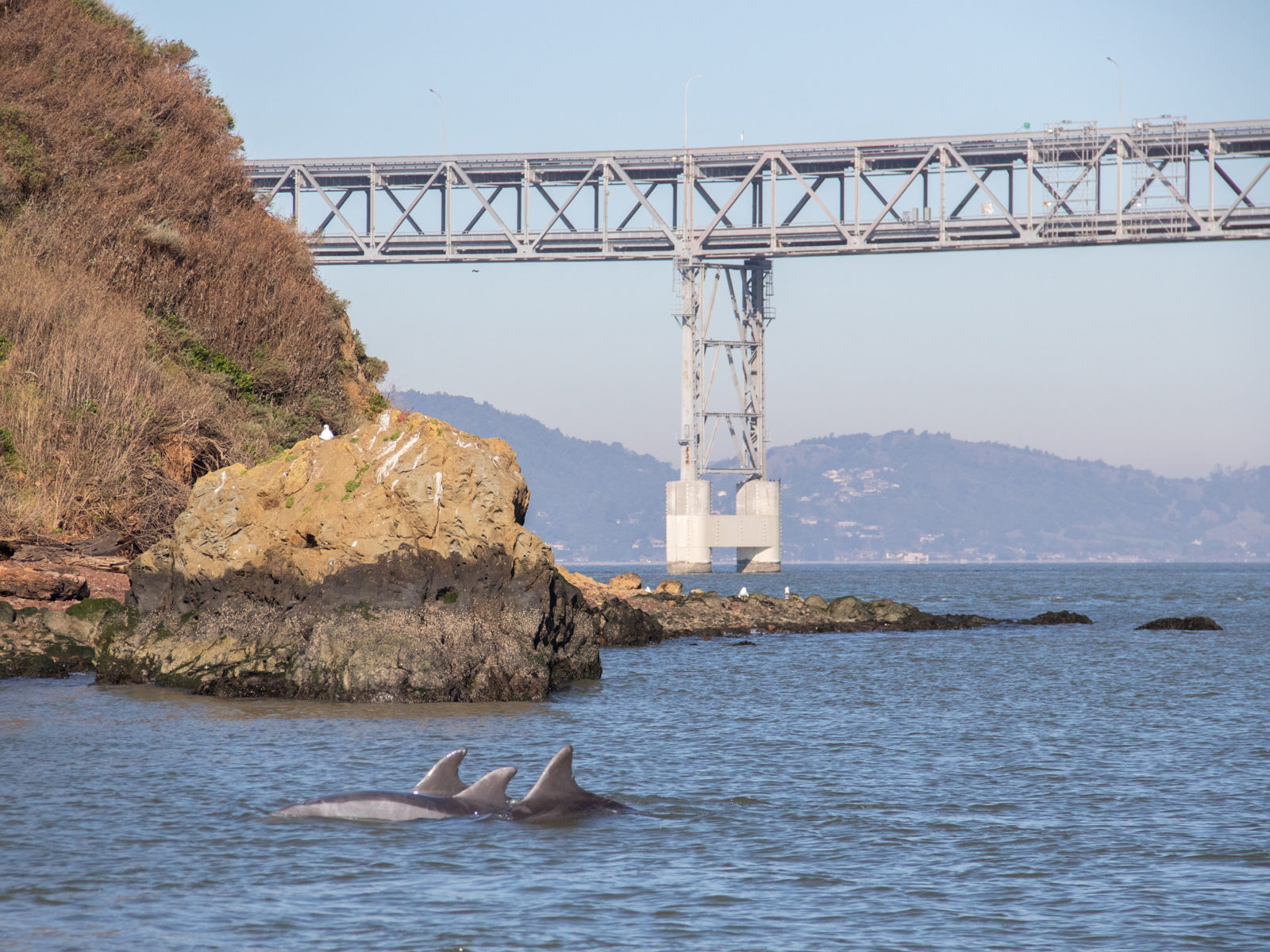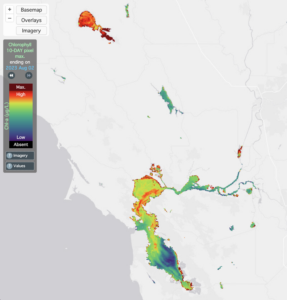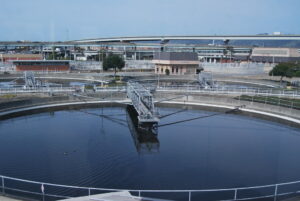
Do dolphins and porpoises live in San Francisco Bay?
There are both! First, a who’s-who lesson. Although the words “dolphin” and “porpoise” are sometimes used interchangeably, there is a big taxonomic difference between these two groups of cetaceans. Porpoises have spade-shaped teeth; short, triangular dorsal fins—think shark—and blunt heads. Dolphins generally have conical teeth, curved dorsal fins—not shark—and an elongated snout. The ancient Greek philosopher Aristotle was the first to note that dolphins and their kin were air-breathing mammals and not fish. And our English “porpoise” comes from the Latin words porcus and piscis, or “pig fish,” another ancient reference to air-breathing mammals.
As their name indicates, harbor porpoises frequent inshore waters, including ours. There have been pods living in San Francisco Bay for centuries, if not millennia. We know that because of porpoise bones found throughout the layers of the Ohlone shellmounds in Emeryville, which date from approximately 2,600 to 700 years ago. But the creatures were absent for much of recent memory—over 60 years. As The Marine Mammal Center Cetacean Field Research Program research associate (and my dear friend) Bill Keener wrote in these pages in 2011, the submarine net that stretched across the Golden Gate during World War II kept out resident porpoises. The net was not just a physical impediment; it also generated a lot of underwater noise, which may have disturbed nearby pods.
Remember, they are an exotic species in the Western United States, and are rapidly increasing their geographic range and range of habitats. Are they outcompeting or excluding native species in the process? How would we know? We have done almost nothing to monitor changes in the assemblage of mushroom species in areas before and and after the incursion of death caps.
Further Reading
Pringle et al, “The ectomycorrhizal fungus Amanita phalloides was introduced and is expanding its range on the west coast of North America,” Molecular Biology 2009
Lockhart et al, “Simultaneous emergence of multidrug-resistant Candida auris on 3 continents confirmed by whole-genome sequencing and epidemiological analyses,” Clinical Infectious Diseases 2017
Battalani et al, “Aflatoxin B1 contamination in maize in Europe increases due to climate change,” Scientific Reports 2016
Every report of a bottlenose dolphin in the Bay is useful. Members of the public can share their own sightings at: marinemammalcenter.org/science/cetacean-field-research.
Harbor porpoises weren’t seen again in San Francisco Bay until 2008. What changed? Well, the submarine net had been removed in August 1945, when Japan surrendered, so other factors must also have contributed. It’s possible that in the interim, our porpoises collectively “forgot” about the Bay and had to rediscover it. Rampant postwar development also contaminated our waterways with raw sewage and industrial wastes, decreasing biological productivity and reducing fish stocks. In 1972, when the Clean Water Act mandated that U.S. waters be “swimmable and fishable,” things finally started to look up. As water quality improved, schools of small fish again frequented our waters. Perhaps the porpoises followed them.
And now, bottlenose dolphins are also frequenting our maritime neighborhood. (Those of us of a certain age remember the TV star Flipper, a bottlenose dolphin from Florida.) Before 1983, there were no reports of bottlenose dolphins in our area; the closest place they lived was Southern California. But that year, El Niño brought warm water and different species of fish north…along with the dolphins. By 2010, they were being photographed regularly in San Francisco Bay. Biologists from San Diego recognized some of these individual dolphins and said, “Those are ours!”
By 2016, according to Keener, bottlenose dolphins had become permanent residents in the Bay. Kayakers, paddleboarders, and swimmers report watching these delightfully intelligent mammals as they hunt for now-plentiful fish. One of the best places to see them is near Fort Point underneath the Golden Gate Bridge.
These dolphins are extremely social and flexible in their interdolphin connections, typically spending time in changing groups of five to ten. If you spot some, please take photos and send them to the Marine Mammal Center’s cetacean research team. So far, its Bay Area catalog has over 100 known adult dolphins.
That’s what I did in early March, when I had the good fortune to witness a pod of bottlenose dolphins just off of Stinson Beach, heading south toward Point Bonita. As I photographed them, I could see the COVID-19–stricken Grand Princess liner also heading toward San Francisco Bay. What a moment!
By comparing the unique patterns of nicks and notches on their dorsal fins, Keener helped me identify three individuals—Chip and Mattea, both females, and Willow, a male. Dolphins can live 50 years or more. Willow, I learned, is at least 20 years old! He was seen in San Francisco Bay for the first time in 2013. Just a week after I saw him in Marin County, Willow swam down to Pacifica, where another researcher saw him while surfing. And in mid-April, Keener spotted him again off Baker Beach. Citizen science at work!




